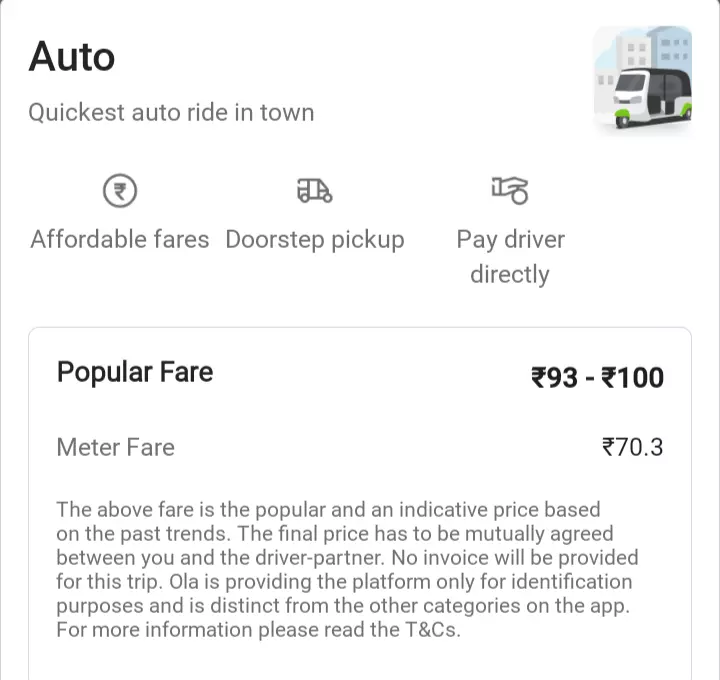Ola Auto’s Revised ‘Tariff’ Structure is Quite Baffling

Ride sharing applications have become a staple for Indians with the ever growing demand for local travels. Apps such as Ola, Uber and Rapido complete lakhs of rides every day across the country. (Image: DC)
Hyderabad: Ride sharing applications have become a staple for Indians with the ever growing demand for local travels. Apps such as Ola, Uber and Rapido complete lakhs of rides every day across the country.
Ola, the Indian ridesharing app is one of the most popular ones among them. Handling nearly four lakh rides every day and more than 10 crore downloads on Google Play Store alone, it is among the favourite ride service providers.
However, in a controversial move, Ola has revised its terms and conditions for auto rides. In the change of rules, they declared that they will display a fare range instead of a fixed price, implying that the customer and driver must negotiate a price.
For example, a user travelling from point A to point B previously had to pay the price shown in the Ola app. But now, the application will show a price range of Rs 150-200, which the customer and the driver must negotiate and Ola will not play any role in determining the eventual fare. This change came into force on March 1.
A user on Twitter posted a complaint tagging Ola support, after booking a ride from LB nagar to Badangpet on March 20 morning. The user wrote that the ride showed a price range of Rs 121-130. On paying Rs 130, the driver demanded Rs 250. The user ended up paying Rs 200 for the ride, and there was no help from Ola, which includes ‘the company shall not be liable for the price’ clause in the revised structure.
A reddit user from Bangalore posted that an auto driver insisted on Rs 400 for a negotiated Rs 150 price and left. There was no help, whatsoever, from Ola’s customer support.
When Deccan Chronicle asked about the situation, an Ola executive, who wished to remain anonymous, said, “We deal with a lot of situations everyday where a customer claims a driver took an extra amount and we have to refund that amount. But when we investigated, we found that no extra money was collected by the driver. Although we tackled that issue, we are getting more complaints and issues from customers. The amount of calls and emails we’re receiving is increasing.”
( Source : Deccan Chronicle )
Next Story

